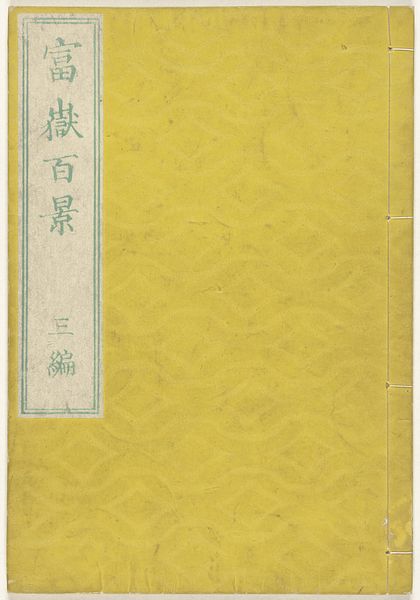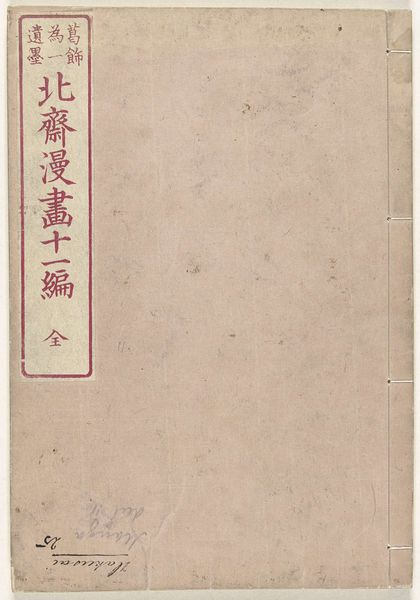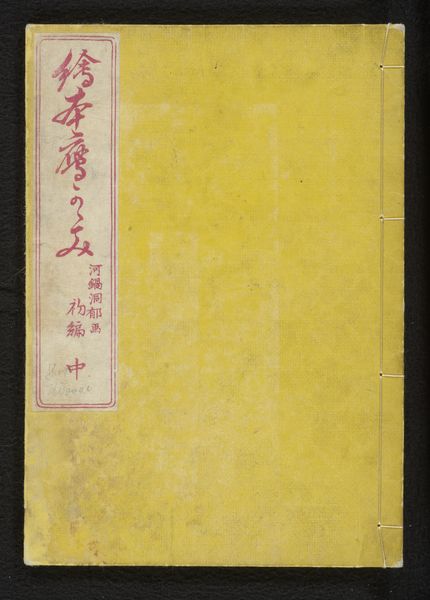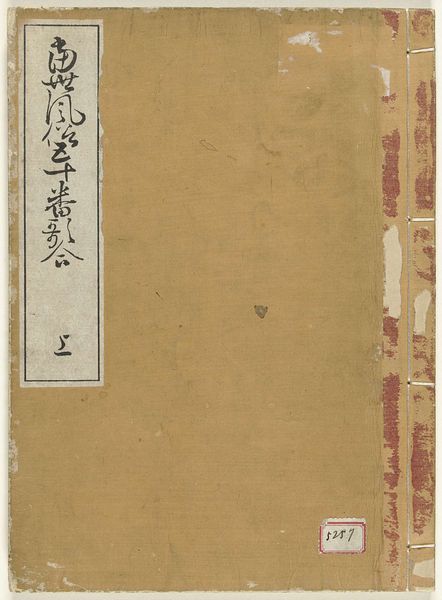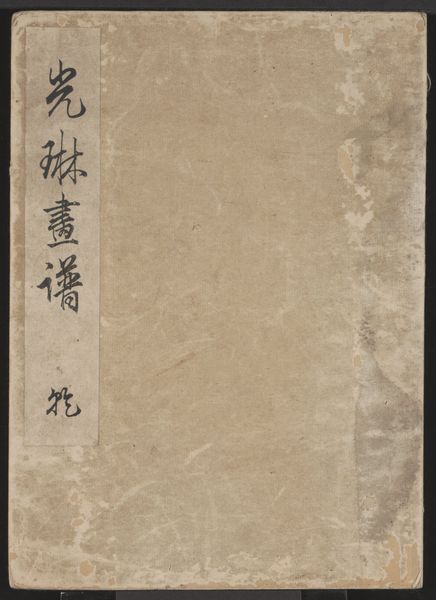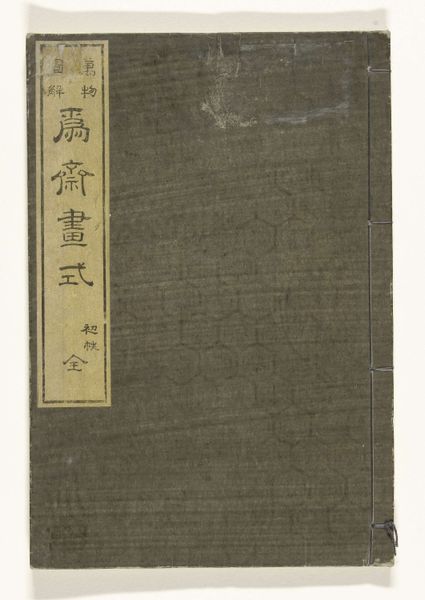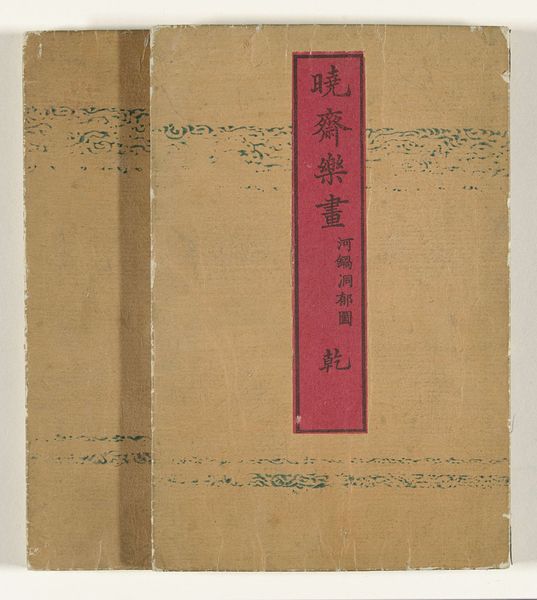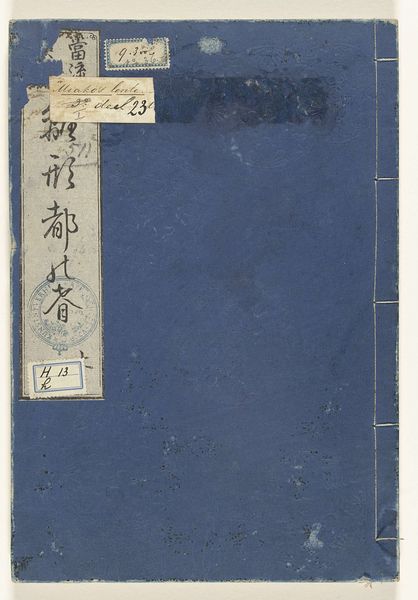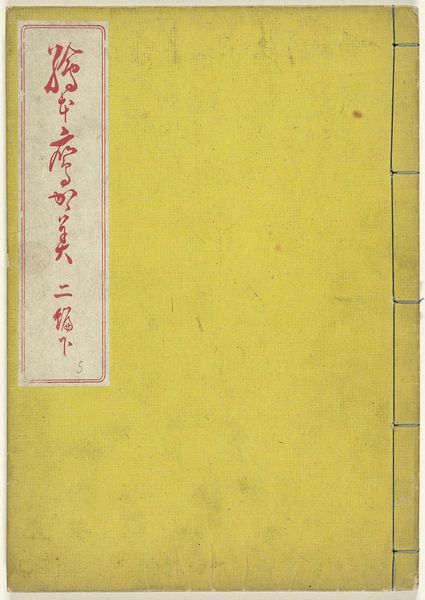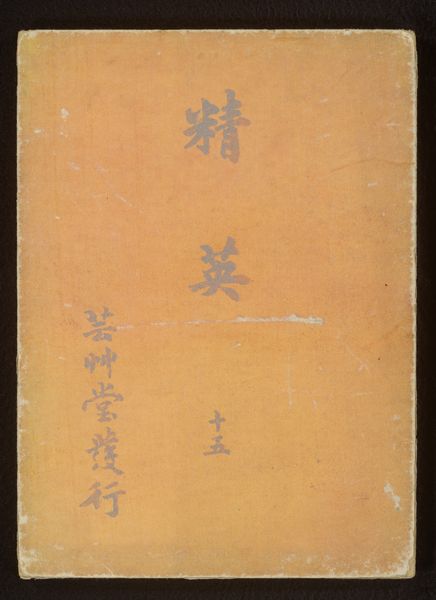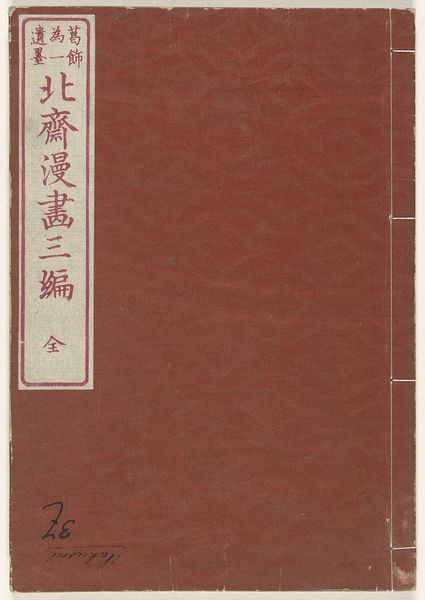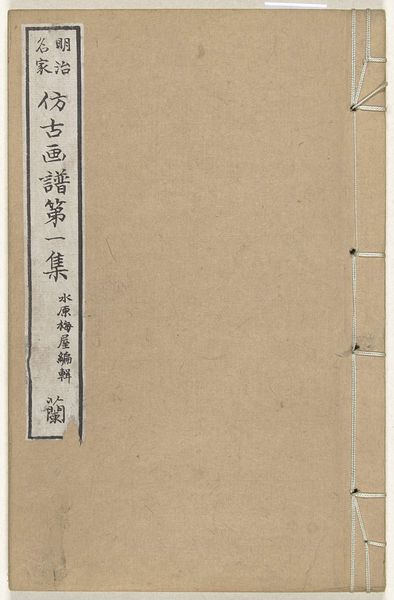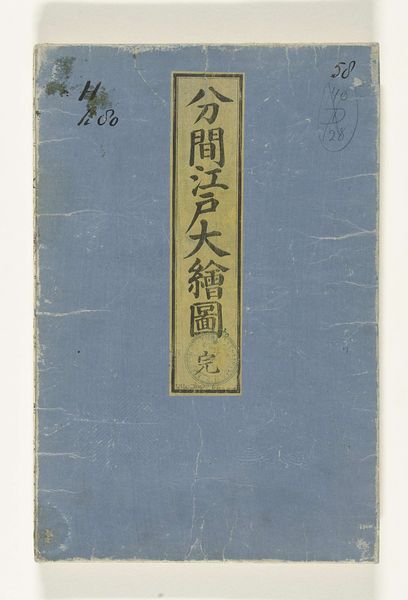
Dimensions: height 227 mm, width 157 mm
Copyright: Rijks Museum: Open Domain
Curator: At first glance, this image gives me the feeling of encountering a well-loved, aged manuscript, with a unique and subtle color scheme. Editor: Indeed! Here we have Katsushika Hokusai's "Honderd gezichten op de berg Fuji - deel twee," potentially from 1875, now held in the Rijksmuseum. It's a print, a woodblock print specifically, so let's consider that process for a moment. The skill required to carve such delicate lines. Curator: Absolutely, the use of woodblock speaks volumes. The Ukiyo-e style flourished in a time of peace, yet depicts a certain ideal, promoting the values of merchant classes—quite a public facing image, isn't it? How were such prints consumed? Editor: Inexpensive woodblock prints allowed commoners to engage with images in a way that was unprecedented. Think of it as mass-produced art accessible across social strata. But beyond sheer reproducibility, think about the implications in the late 19th Century when Japan opens up its markets, triggering a 'Japonisme' craze throughout Europe, completely changing graphic design through this new accessibility of images. Curator: It’s also fascinating to consider how Mount Fuji itself gained such cultural prominence and became almost a brand. There are layers upon layers here when thinking of Japanese cultural and societal values, no? Editor: Right. And think of Hokusai and other artists catering to and shaping those tastes through production. But even at the Rijksmuseum, consider how the location of art impacts meaning. Here it’s viewed through the Western gaze, transforming its value. Curator: Very good point! It underscores the global art exchange system. Understanding this changes one's perspective. Editor: Precisely! Art is constantly molded by production processes, consumption and societal systems surrounding it. Curator: It's enriching to grasp both how objects such as this influenced culture then and are viewed now, to continue developing critical discussions!
Comments
No comments
Be the first to comment and join the conversation on the ultimate creative platform.
